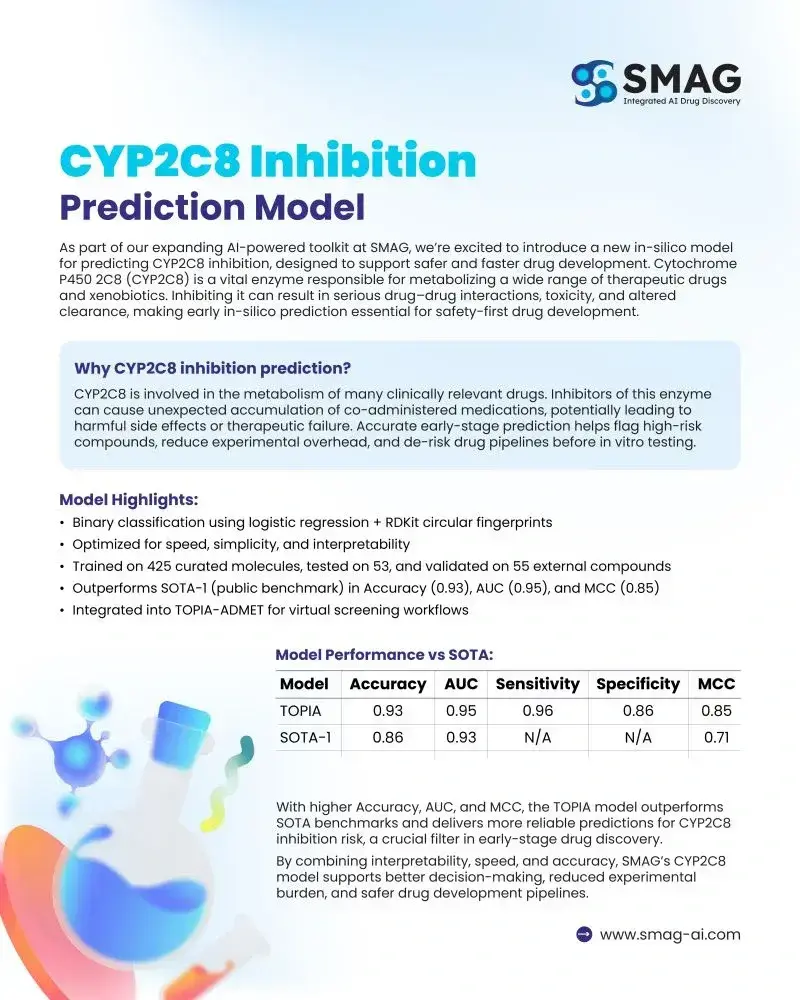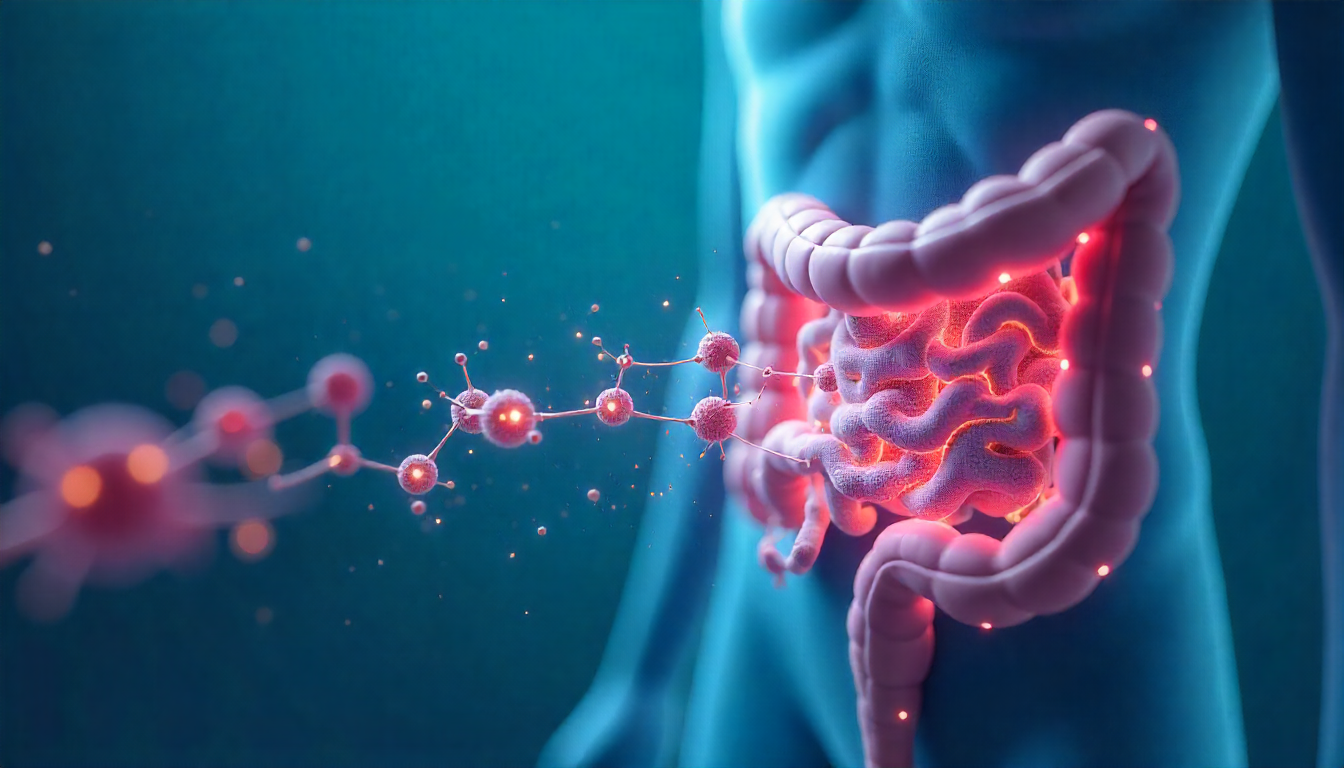
Drug–drug interactions (DDIs) remain a persistent challenge in modern medicine, often leading to adverse effects, reduced therapeutic efficacy, or even life-threatening outcomes. One of the critical factors behind such interactions is the inhibition of cytochrome P450 enzymes, which play a central role in drug metabolism. Among these, CYP2C8 (cytochrome P450 family 2 subfamily C member 8) is especially important due to its role in processing a wide variety of therapeutic drugs and xenobiotics.
To address this challenge, SMAG has developed an AI-driven in-silico CYP2C8 inhibition prediction model, designed to identify high-risk compounds early in the drug discovery process. By providing fast, interpretable, and accurate predictions, this model represents a significant step toward safer and more efficient drug development.
Why Predict CYP2C8 Inhibition?
CYP2C8 is responsible for metabolizing numerous clinically relevant drugs. If inhibited, the enzyme’s reduced activity can cause dangerous accumulation of co-administered medications, leading to toxicity, therapeutic failure, or severe side effects.
Early prediction of CYP2C8 inhibition offers several advantages:
- Safety-first drug discovery:Compounds with high inhibition potential can be flagged before experimental testing.
- De-risking pipelines: Identifying liabilities earlier prevents late-stage attrition.
- Efficiency gains: Reduces time, cost, and reliance on resource-heavy in vitro assays
As a result, CYP2C8 inhibition prediction is now considered a critical filter in modern ADMET (Absorption, Distribution, Metabolism, Excretion, and Toxicity) workflows.

Model Highlights
The SMAG CYP2C8 prediction model leverages machine learning to deliver both performance and interpretability. Its design ensures it can be seamlessly integrated into high-throughput workflows.
Key features include:
- Binary Classification Approach: Uses logistic regression combined with RDKit circular fingerprints for robust molecular feature extraction.
- Data-Driven Development: Trained on 425 curated molecules, tested on 53, and externally validated on 55 independent compounds.
- Performance Metrics: Outperforms benchmark models in multiple categories, including accuracy, AUC and Matthews Correlation Coefficient (MCC).
- Optimized for Speed & Interpretability: Enables rapid screening while maintaining explainability for researchers.
- Seamless Integration:Embedded within TOPIA-ADMET, SMAG’s AI-powered platform for virtual screening and toxicity prediction.
Benchmarking Against State-of-the-Art Models
When compared with SOTA-1, a leading public benchmark model, SMAG’s CYP2C8 inhibition model shows superior predictive power across key metrics.
| Model | Accuracy | AUC | Sensitivity | Specificity | MCC |
|---|---|---|---|---|---|
| TOPIA | 0.93 | 0.95 | 0.96 | 0.86 | 0.85 |
| SOTA-1 | 0.86 | 0.93 | NA | NA | 0.71 |
NA = Not Available (values not reported for this model).
These results demonstrate that the TOPIA model not only improves prediction accuracy but also provides more balanced classification, with high sensitivity (ability to detect inhibitors) and specificity (ability to detect non-inhibitors).
Implications for Drug Discovery
By delivering faster, safer, and more accurate predictions, SMAG’s CYP2C8 inhibition model offers significant advantages to pharmaceutical researchers:
- Enhanced Screening:Ideal for filtering large compound libraries in early-stage discovery.
- Reduced Experimental Burden: Decreases reliance on expensive in vitro and in vivo assays. .
- Improved Decision-Making:Interpretability ensures researchers understand why a compound is classified as high-risk, enabling more informed choices. .
- Enhanced Screening:Faster identification of viable leads shortens development timelines and reduces costs.
Conclusion
The SMAG CYP2C8 inhibition prediction model exemplifies how artificial intelligence is reshaping the landscape of drug safety and development. With its combination of accuracy, speed, and interpretability, the model provides a reliable computational filter for detecting potential CYP2C8 inhibition risks.
By integrating into the TOPIA-ADMET platform, this tool empowers researchers to design safer drugs, avoid costly late-stage failures, and accelerate the journey from discovery to clinic.











